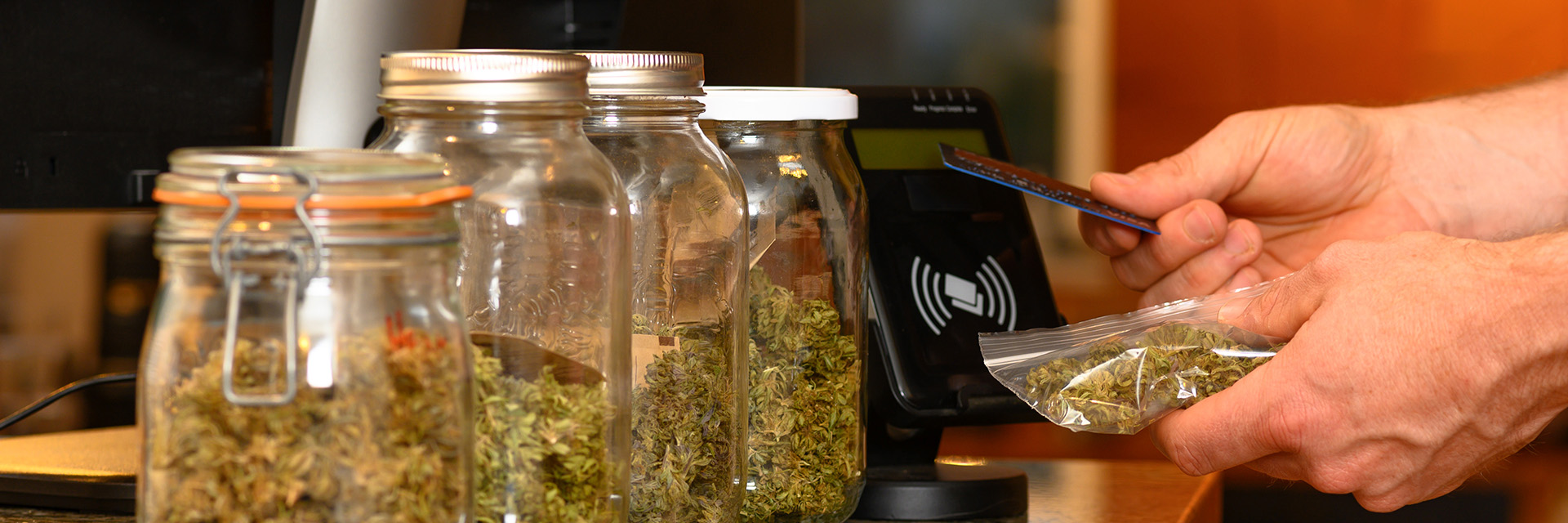
Declining Cannabis Prices
- Published
- Jul 22, 2022
- Share
By Joseph Nguyen and Michael Blood
In an inflationary period where the prices of most products are on the rise, why is it that cannabis seems unaffected? The question surrounding this is, “Is cannabis inflation-proof or are there other factors in play?” Historically, the price for a gram of cannabis has been around the $10 and $20 range, and on up. Nowadays, consumers can find cannabis for around $5 per gram depending on how much they purchase.
The cannabis industry, like all other industries, has been impacted by the record inflation rates of 2022, as well as supply chain disruptions and labor market challenges brought on by the pandemic. Despite this, prices of marijuana flower, edibles and vape products, in states such as California, Colorado, Michigan, Nevada, Oregon and Washington, when averaged by the price per milligram or gram of THC, have declined by 16.7%, 11.8% and 12.4%, respectively, from January 2021 to January 2022.1 In Michigan, the average price for a gram is $5, less than half of the national average.2 Currently, marijuana remains federally illegal, preventing interstate commerce (except for multi-state operators) and resulting in segmented markets and unique industry dynamics. As a result, prices have become heavily dependent upon state-level supply and demand factors.
As the industry is growing and evolving, a vast majority of producers are opting to accept lower margins, as opposed to passing additional costs on to the consumers. Elements such as heavy competition, high taxation rates, and undercutting of prices via black market operations are primary factors preventing product price hikes. Competition among marijuana growers is increasing as more cities allow operations: In the past year, the number of municipalities allowing marijuana businesses jumped to 118 from 87, while the number of licensed businesses jumped by nearly 150 to 1,238. In two years, the number of growers has nearly quadrupled to 1,238, and more than a third of those — 458 — are classified as Class C, larger operations that can harvest 2,000 to 10,000 plants.3 Instead, the higher cost of inputs is being distributed in other ways, such as scaling back expansion plans and limiting product ranges. Additionally, companies have been streamlining their supply chain operations, negotiating better prices for larger orders and ordering select products that customers are using. This keeps supply chain costs lower, at least when it comes to moving supplies. Retailers are saving on shipping costs that are greatly impacting other industries. This has limited the variety of products available at many retailers but has allowed them to maintain current prices.
Growers have especially been affected by the adverse effects of the pandemic, as well as the war in Ukraine. Ukraine and Russia export 28% of the world’s fertilizers,4 and wartime disruptions and economic sanctions have significantly reduced those supplies, causing the price of fertilizers to double in some cases. The largest cost increases have been attributed to labor, where wages have increased by 14% on average.5 Companies have been forced to increase wages in order to keep pace with competitors and maintain employees.
During the pandemic, consumers began spending more money on cannabis than ever before. This led to cultivators producing more products, and now as the pandemic begins to wind down, supply is outweighing the current demand for cannabis. As the supply of cannabis has gone up over the past 18 months, we are seeing a decline in the prices, likely because demand is flat or declining as well. Monthly dispensary sales revenue has also fallen off significantly, shrinking on a year-to-year basis for nine months straight.6
In a quickly growing industry such as cannabis, it makes sense that many entities would want to try to capitalize. However, this has proven to be a detriment as supply now outweighs demand and producers are lowering the sale prices just to compete. This, on top of the strength of black-market competition has made cannabis, not inflation proof, but rather a product whose margins are slowly decreasing as widespread legalization and innovation occurs.
1https://lite.cnn.com/en/article/h_246d0322b83e7a31040dbc1fdb03e356
2https://www.bridgemi.com/business-watch/marijuana-prices-plummet-michigan-customers-are-happy-farmers-worried
3https://www.bridgemi.com/business-watch/marijuana-prices-plummet-michigan-customers-are-happy-farmers-worried
4https://www.leafly.com/news/industry/inflation-keeps-rising-but-weed-prices-stay-the-same
5https://www.cnn.com/2022/02/26/economy/cannabis-inflation-weed-prices/index.html
6https://www.westword.com/marijuana/inflation-makes-everything-more-expensive-but-weed-13856672
Contact EisnerAmper
If you have any questions, we'd like to hear from you.
Receive the latest business insights, analysis, and perspectives from EisnerAmper professionals.











